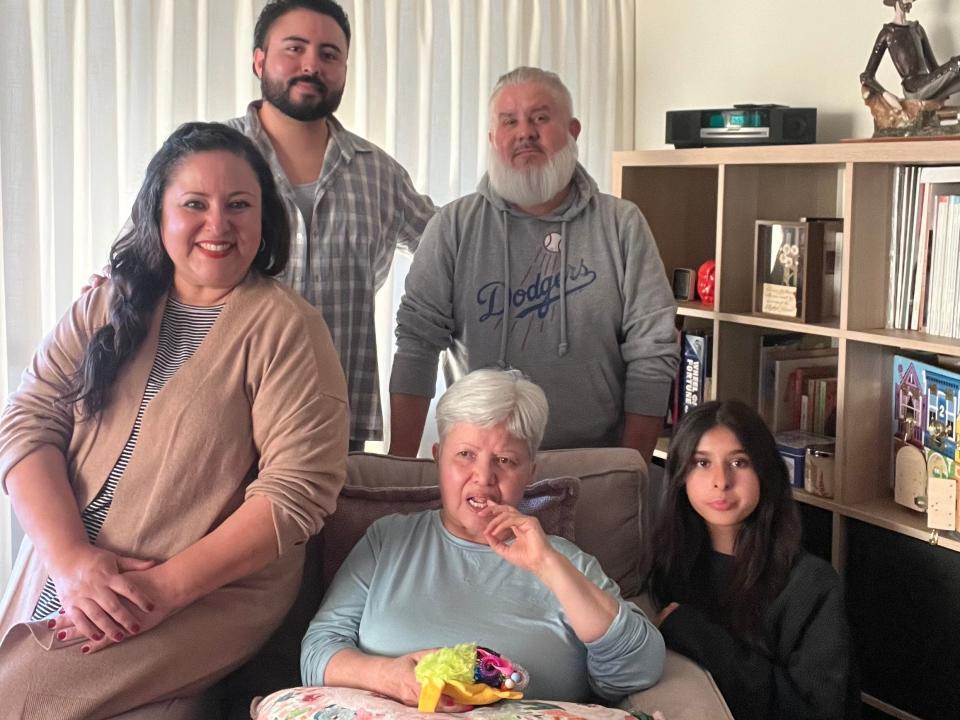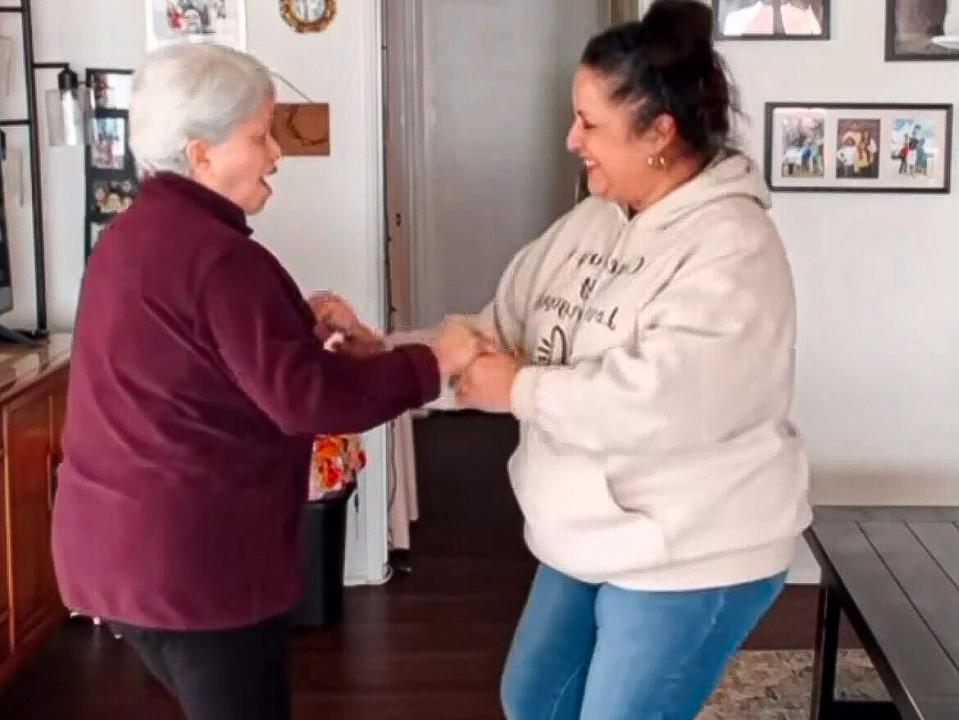I left my $90K job to take care of my mom full-time. Now I make less than minimum wage.
Alma Valencia, who once earned $90K in fashion, cares for her mom with dementia for $17.50 an hour.
The 48-year-old provides the eldercare as paying someone else would be too expensive for the family.
She is part of the "sandwich generation," simultaneously caring for her mom and her children.
This as-told-to essay is based on a conversation with Alma Valencia. It has been edited for length and clarity.
After doing the math, I became my mom's primary carer in June 2020. It made sense because we wanted the best for her — and our family struggled to afford full-time, outside help.
Mom — who has frontotemporal dementia and needs 24-hour supervision because she wanders around, day and night— qualified for In-Home Supportive Services (IHSS) paid through the state of California.
It took a lot of form-filling and communication with the doctors and protective services to complete the process. There was much back and forth about her finances. She had zero assets, and we had to prove she was living at the poverty level.
Still, she only received 30 hours of care a month. The rest of the time, we had to pay a sitter or make up the shortfall ourselves.
I was stretched thin as a member of the sandwich generation
At the time, I was working long hours as a technical designer for a fashion company. My annual salary was around $90K. I'd often have to take time off or call in sick to stay with Mom, drive her to medical appointments, and deal with Social Security and mountains of paperwork.
It was particularly difficult because I simultaneously cared for my 12-year-old daughter, Amelia, and my 25-year-old son, Daniel. I was stretched thin as a so-called "sandwich generation caregiver." At one point, I had no choice but to take family leave.
Although my work team supported me, I couldn't help feeling I was doing them a disservice by falling behind.
One evening, I was working late on a project. My mind was so strained that I made a mistake. My boss got frustrated and texted to say she was disappointed in me.

I'd already missed a school event for Amelia, and my mom's sitter needed to leave. I cried myself to sleep because I didn't know how to fix the situation. Things were breaking down at work and home. I felt like I wasn't there for either my kids or my mom.
My hand was forced when I was laid off at the beginning of the pandemic. It was upsetting, like, "Thank you very much and goodbye."
My husband, Juan, 52, and I discussed coping. The only reasonable solution was for me to work for the state as Mom's carer. I contacted the social worker, and her hours of care were finally increased to 250 a month.
My earnings were $15 an hour. There was zero training. I just had to get on and do it.
Caregiving has become my vocation
It was difficult in the beginning. I had to let go of the part of my identity in what's considered more of a profession. "Please, can somebody else take the weight?" I'd think.
But I got inventive. Our apartment is 680 square feet with two bedrooms and one bath. Amelia has one bedroom, and Mom, 72, has the other. Juan and I sleep on a fold-out sofa bed in the living room. We joke about it. We call it "small space, big style."
I've set up strategies and routines and organized everyone. Little by little, I've started getting a good rhythm. "OK, I can do this," I told Juan. Eventually, I accepted my caregiving role as my vocation.
I'm now paid $17.50 an hour — $2.50 less than the minimum wage in California. Our union is working on an increase. We deserve better.

The baby boomer generation is living longer but also getting sick as they age. Many in my generation and younger are ignoring the reality that their loved ones will need help. Caregiving must be seen as an actual job. People have told me, "Oh, you're just a caregiver." But they don't understand what it takes.
I'm not a doctor or a nurse. I don't know what's happening inside Mom's brain or body, but I'm trying to figure it out. She has aphasia and limited ability to speak. I've had to learn a different language to communicate with her.
I'm providing the life that Mom wanted
I started an Instagram to share my story as a caregiver. I like to highlight the moments of joy. I've posted photos of our family vacations in a camper van — Mom included — to places like San Francisco and the Grand Canyon. I recently posted a photo of Mom and me dancing together in our apartment.
It's a challenge, but I am providing the life that my mom wanted. She always said that she didn't want to be alone. Up until the day she dies, she will always have me.
Do you have a powerful story about an unusual family situation to share with Business Insider? Please send details to jridley@businessinsider.com.
Read the original article on Business Insider

